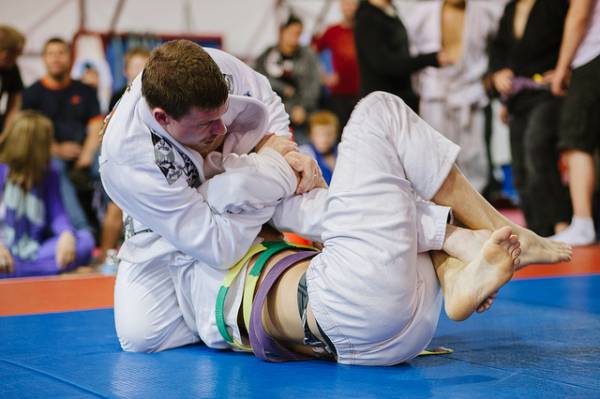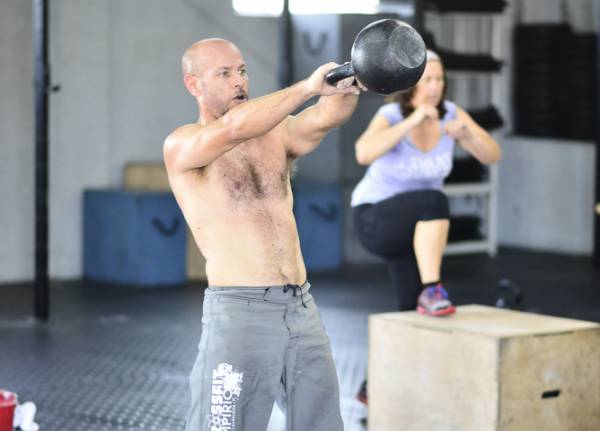Accomplished Brazilian jiu jitsu athletes appear to be lean, well conditioned, and strong. Yet most of them experience pain and injury at some point during their careers. Just because you are active does not guarantee you are healthy. Someone can appear fit from the outside, but experience daily pain and discomfort.
While this may be common, it is not unavoidable. Let’s take a look at how the body responds to training and the steps we can take to avoid pain and injury in our own BJJ careers.
RELATED: How Long Do You Want to Do BJJ? Training for Longevity
Getting Stronger for BJJ
When most people first start training BJJ they do not need any other supplemental exercise, especially if they were previously sedentary. The stress of BJJ training is enough to overtax most people. And as always, the body will undergo a specific adaptation to the demands placed upon it. In our case, this means the body will get strong and conditioned in a manner specific to BJJ.
“Just because you are active does not guarantee you are healthy. Someone can appear fit from the outside, but experience daily pain and discomfort.”
But when the body is adapting to BJJ training, there is something else going on that is often hidden. Getting stronger in a particular pattern may also mean the body is getting weaker in another. To counteract this, you must include general exercises to help strengthen the patterns not normally strengthened through BJJ alone.
Exercises can be broken down into a few simple categories. In this article we will discuss two of these categories: general physical preparedness (GPP) and specialized physical preparation (SPP).
RELATED: Why All BJJ Athletes Need to Strength Train
GPP Versus SPP
Louie Simmons of the famous Westside Barbell defines GPP as a degree of fitness that extends past absolute strength. Using that as our working definition, GPP includes strength, endurance, mobility, and stability. As humans, it is important we have an overall level of strength, possess some type of endurance, and be able to move properly in basic movement patterns.

SPP is more specific. According to the National Strength and Conditioning Association there are three rules an exercise should follow to be considered SPP:
- The exercise must duplicate the neuromuscular pathway seen in the execution of the competitive sport skill.
- The exercise must develop the same range of motion as the execution of the competitive sports skill.
- The exercise must use the same type of muscular contraction used in the execution of the competitive sports skill.
GPP and SPP are both important for BJJ athletes, but most athletes spend the majority of their time on SPP and neglect GPP. SPP is necessary, but it’s actually GPP that sets the stage for SPP. The bigger your base of general fitness, the more you can push your sport-specific skills. In addition, GPP will help balance any asymmetries or weaknesses that occur as a result of your sport.
RELATED: What Every Good BJJ S&C Program Should Look Like
GPP for BJJ Athletes
Programming GPP for BJJ athletes should start with highly efficient exercises of low skill. Exercises that fit these criteria are easy to learn. Athletes should not waste time learning complicated lifts. There is nothing wrong with Olympic lifts, but they do have a longer learning curve and that time would be better spent on BJJ-specific technique.

The time it takes to learn a proper kettlebell swing, pull up, or chin up, is less than with the Olympic lifts. Basic kettlebell swings are a great way to build general conditioning, and there are no better exercises for BJJ than chin ups and pull ups. Other exercise options include different varieties of squats and lunges. These can be completed with or without weights. And don’t go crazy, two or three days per week of GPP is plenty.
SPP for BJJ Athletes
Every BJJ training session can be considered a form of SPP. As you get closer to competition, your GPP training sessions should be reduced and replaced with more SPP sessions.
SPP exercises for grapplers should mirror BJJ movements and include some form of resistance or speed. Example: shooting double-leg takedowns as fast as you can for twenty seconds. To add resistance, you can shoot in on a partner or a throwing dummy and pick him/her/it up after each shot.
“SPP exercises for grapplers should mirror BJJ movements and include some form of resistance or speed.”
Another way to add resistance to specific BJJ exercises is with bands. You can shoot double-legs with a resistance band around your waist while a partner holds the other end. As you near the end range of your double-leg, the resistance will be at its highest, forcing you to stay strong and push through.
Kettlebells can make a great SPP tool, as well. Try doing some mount escapes while holding a kettlebell. Or try sitting up from the guard position while holding a kettlebell. Both are great ways to add resistance to common BJJ movements.
RELATED: Preventing Common BJJ and CrossFit Injuries
Conclusion
Every sport or activity comes with an associated risk. BJJ is no exception. Including GPP in your training routine will help reduce injury risk, improve overall conditioning, and minimize muscular imbalances that occur as a result of sport.
Save your SPP training for the weeks leading up to a tournament. Doing so will keep you on the mats training and having fun.
Photos 1 & 2 courtesy of David Brown Photography.
Photo 3 courtesy of CrossFit Empirical.






